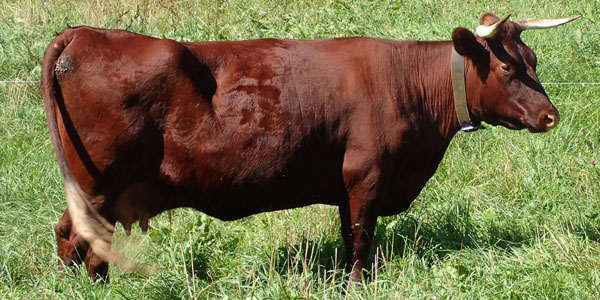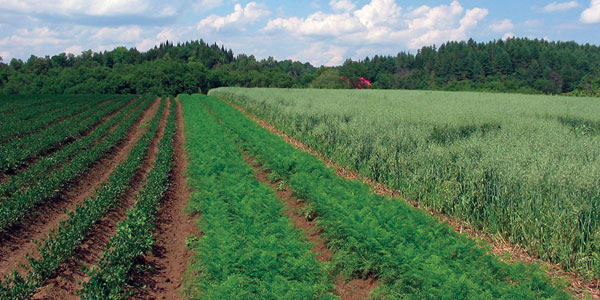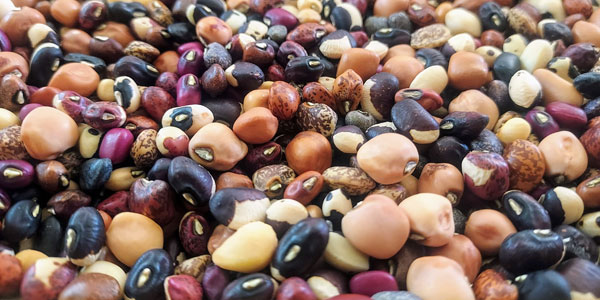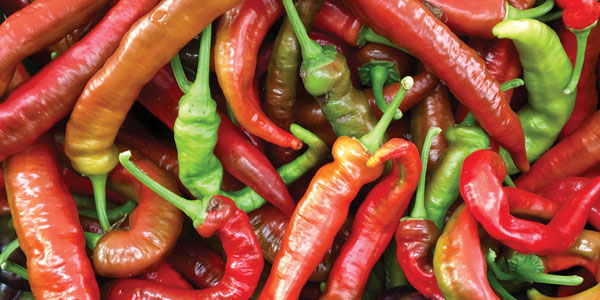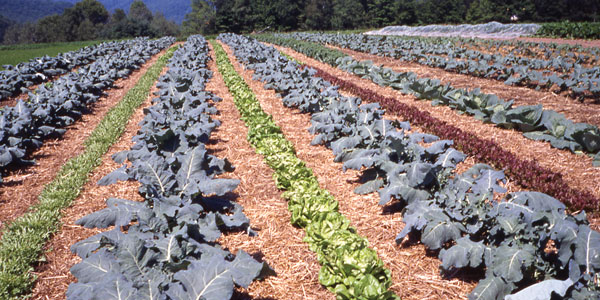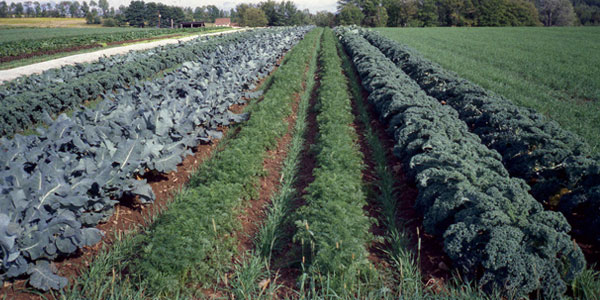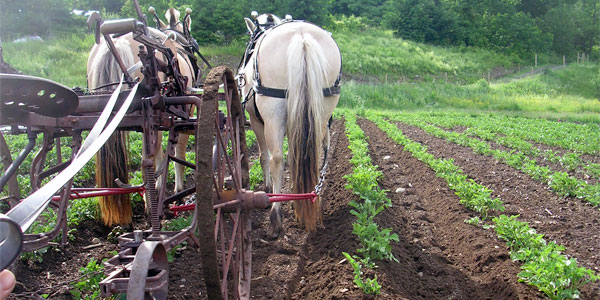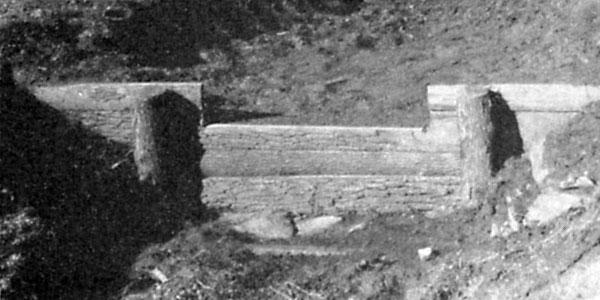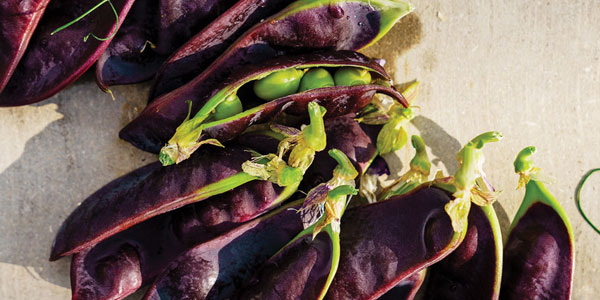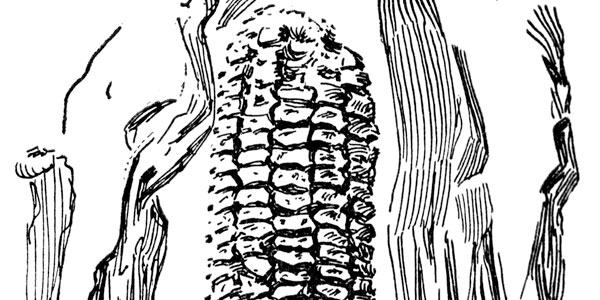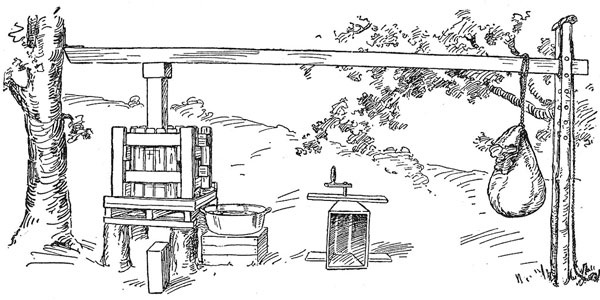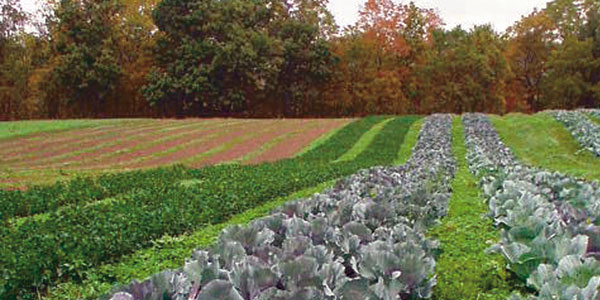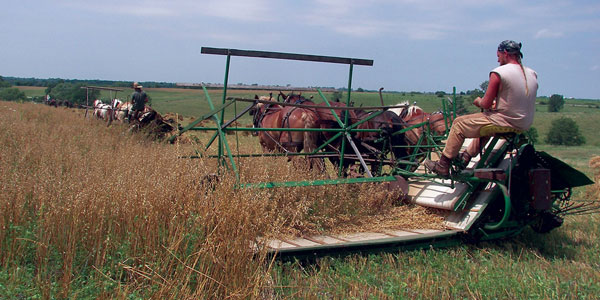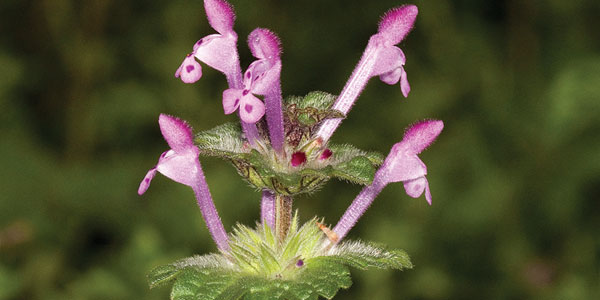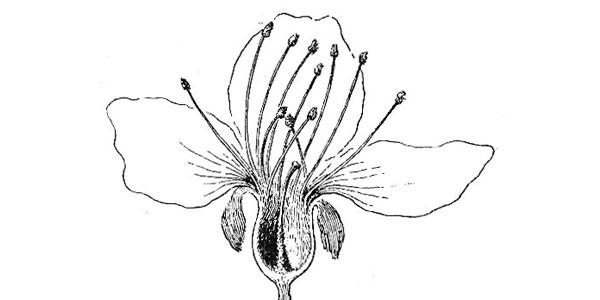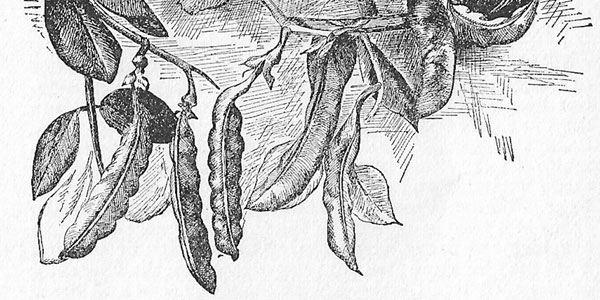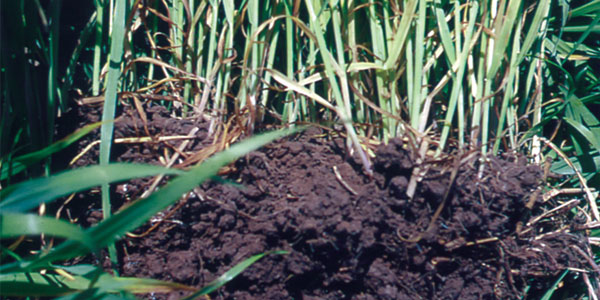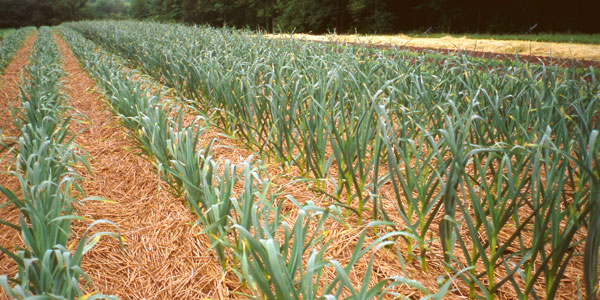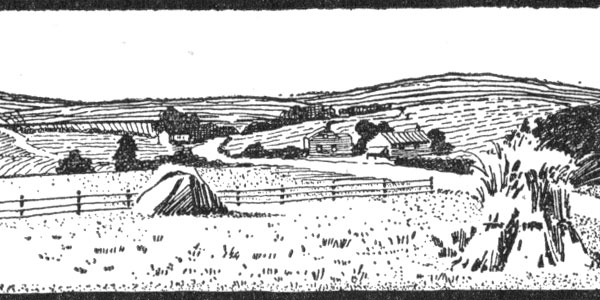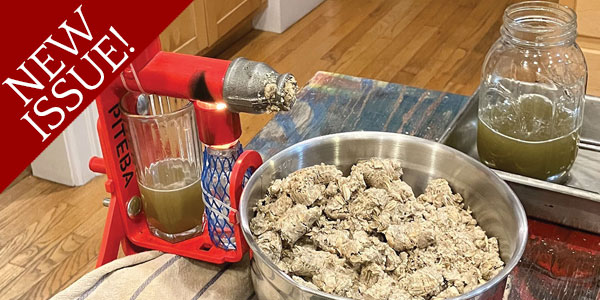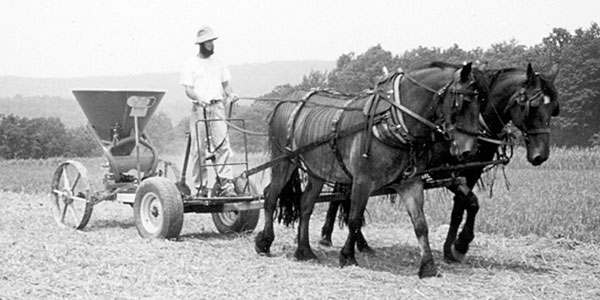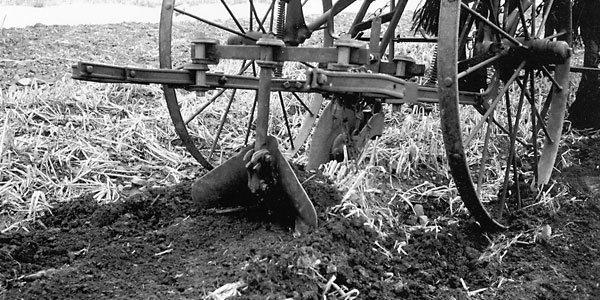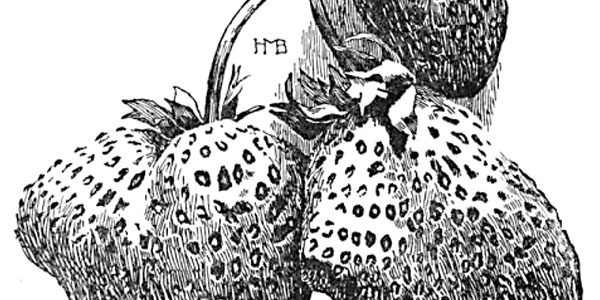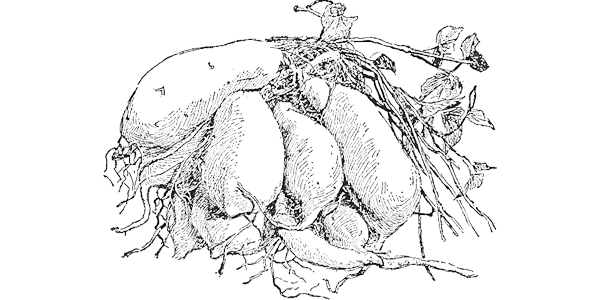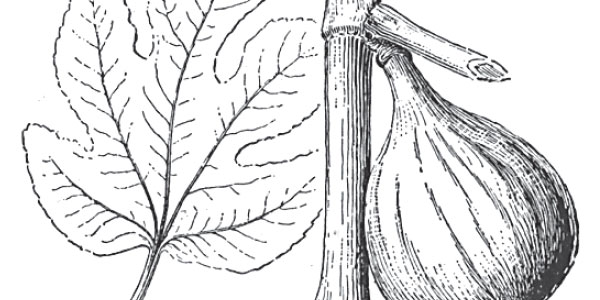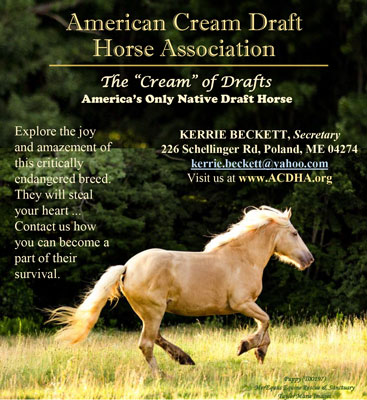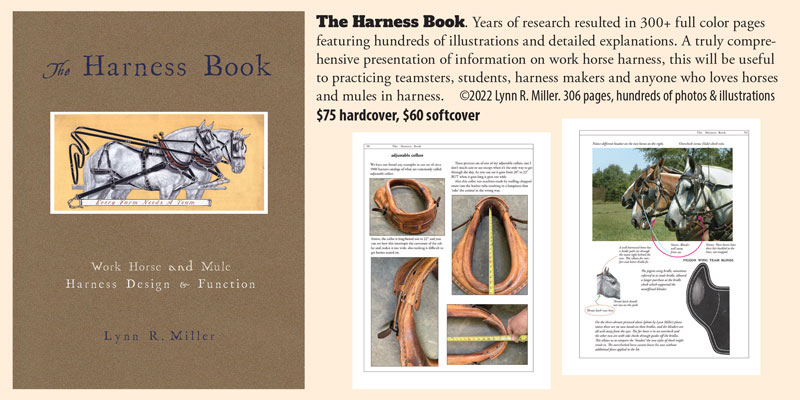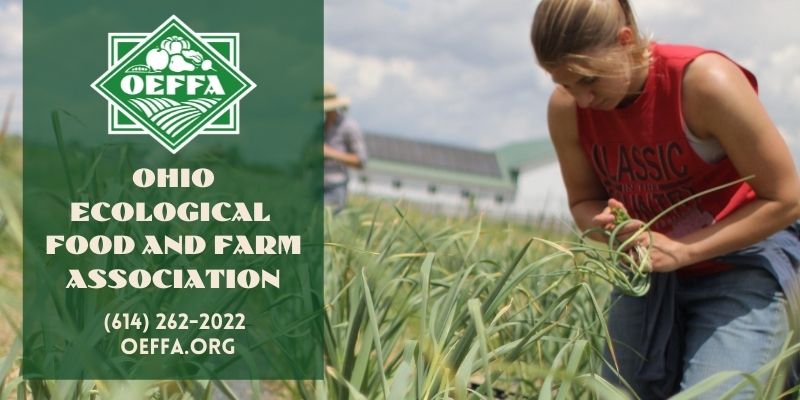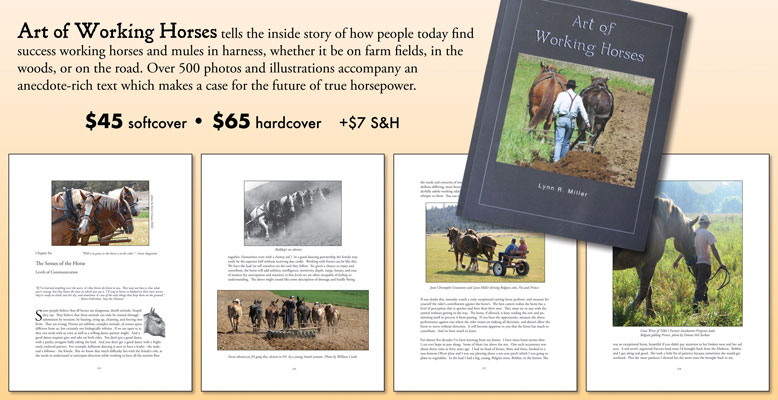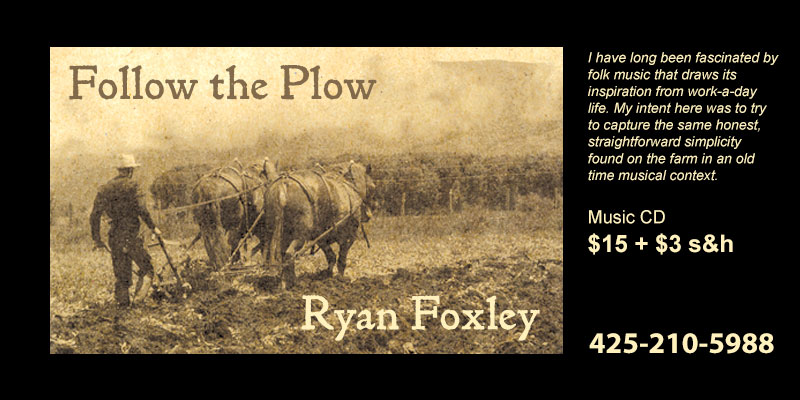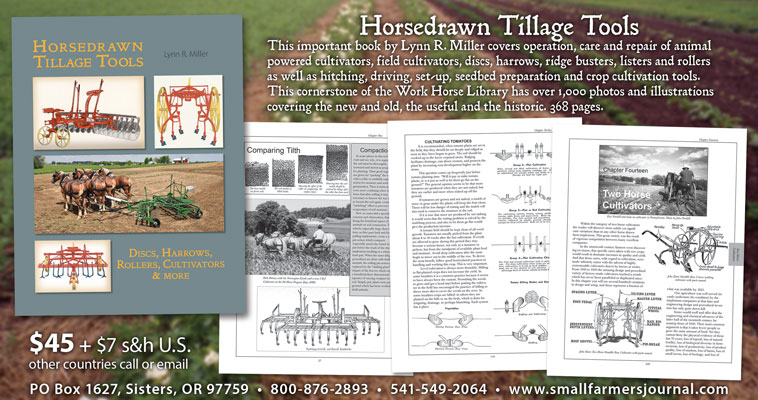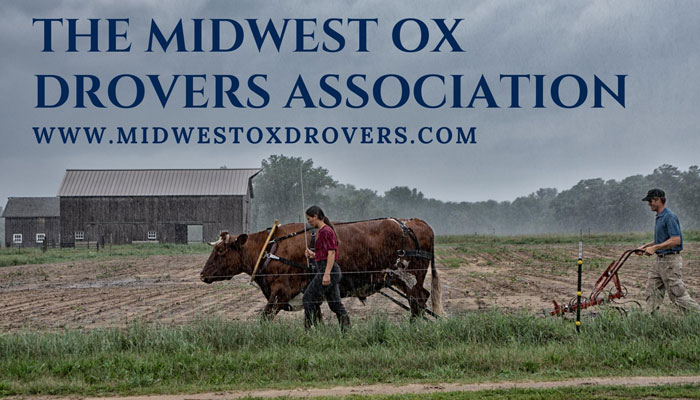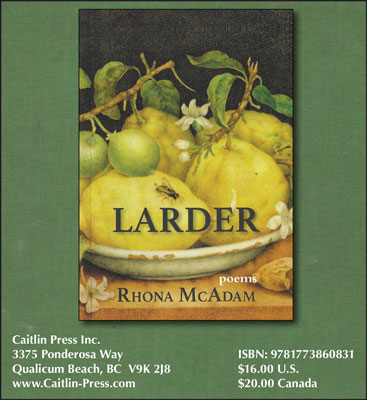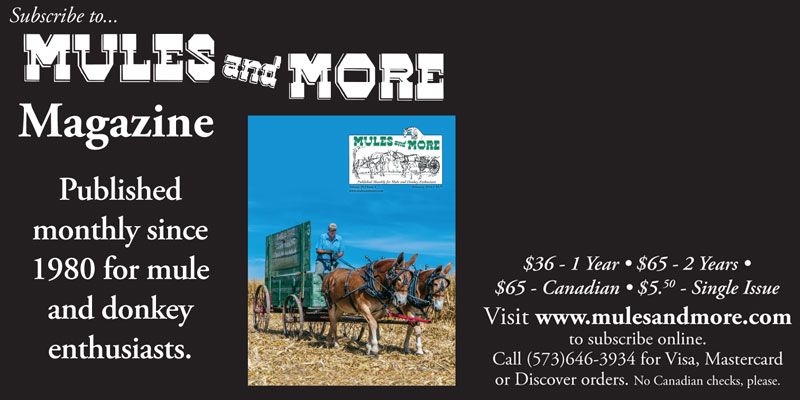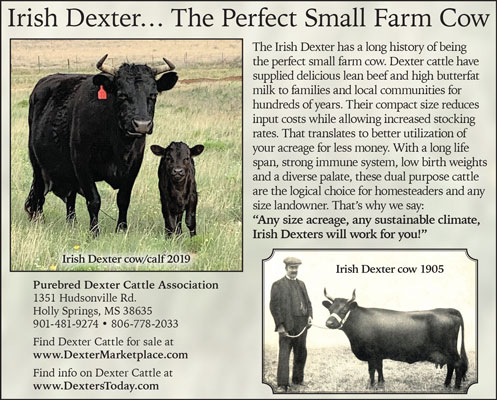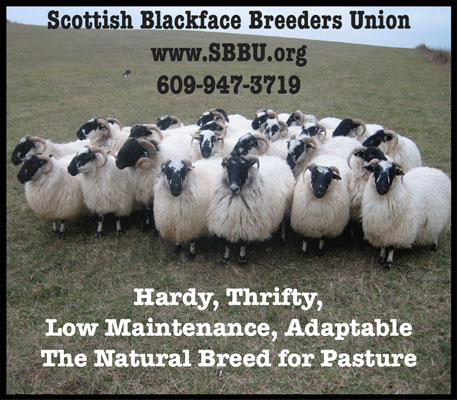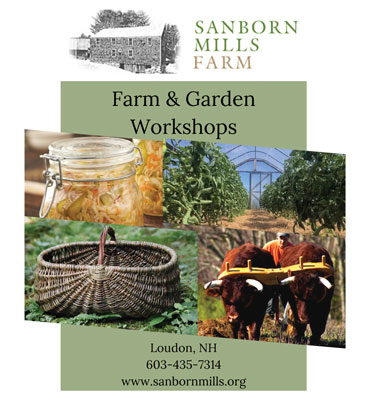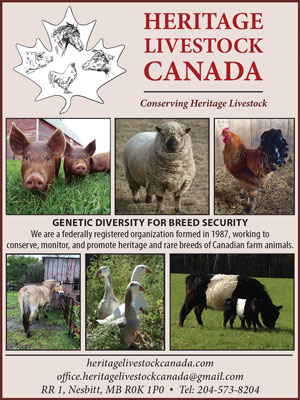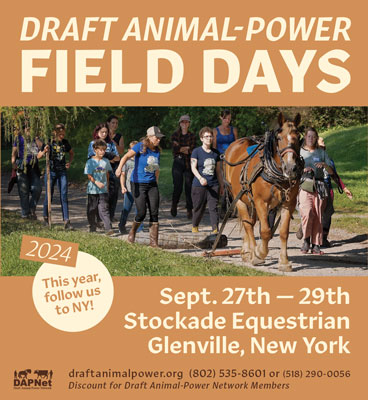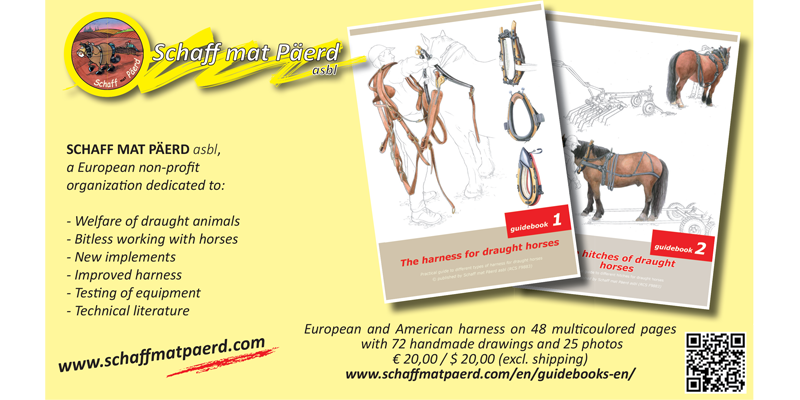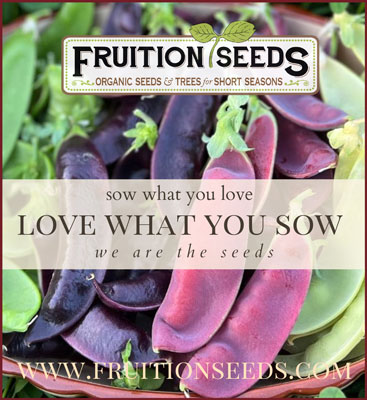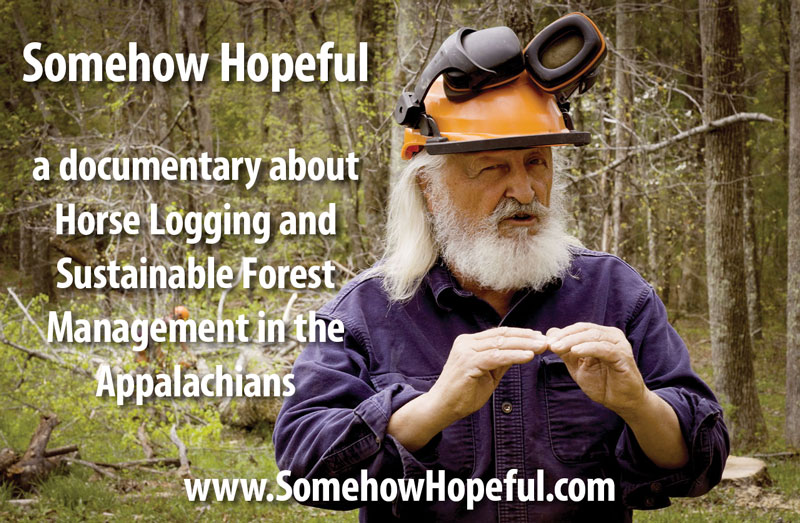MONDAY
April 15, 2024
Ground Driven PTOs
One of the ways tractors both gained and maintained their appeal is from the wider range of machinery they can power with the PTOs they carry. This definitely gave them the advantage over draft power. But is it going to stay that way? It may not have to be on a small farm. During the horsepower road trip Khoke and I went on a couple years ago, we got to see some examples from folks who knew which side of the fence they were on. We saw a number of machines that were reworked and reinvented to make them run off the power source of their choice, namely horsepower.
TUESDAY
April 16, 2024
Headlight Grape
One of the things long desired by Southern fruit growers is a good table grape, sufficiently resistant to leaf and fruit diseases to endure the climatic conditions of their section. Many varieties have been brought forward from time to time; but of the older sorts especially adapted to table use not one, either foreign or native, has yet proved successful over any large area. One of the most promising recent introductions in this field is the Headlight, which was originated by Prof. T.V. Munson, of Denison, TX, in 1895.
WEDNESDAY
April 17, 2024
John Deere Model HH Spreader
Check the adjustments on your spreader and make sure they are in proper operating condition. Hitch your team to the empty spreader to limber it up and see that it is working properly before loading. If you will turn the beaters over by hand before starting to the field, the spreader will start easier and will prevent throwing out a large bunch of manure when starting.
THURSDAY
April 18, 2024
Lost Apples
The mindboggling agricultural plant and animal diversity, at the beginning of the twentieth century, should have been a treasure trove which mankind worked tirelessy to maintain. Such has not been the case. Alas, much has been lost, perhaps forever. Here are images and information on a handful of apple varieties from a valuable hundred year old text in our library.
FRIDAY
April 19, 2024
American Milking Devons and the Flack Family Farm
On a sunny early September day I met Doug Flack at his biodynamic and organic farm, just South of Enosburg Falls. Doug is an American Milking Devon breeder with some of the best uddered and well behaved animals I have seen in the breed. The animals are beautifully integrated into his small and diversified farm. His system of management seems to bring out the best in the animals and his enthusiasm for Devon cattle is contagious.
Are you getting the SFJ Home & Shop Companion?
The Home & Shop Companion is a free weekly email newsletter. It features stories, handy hints, recipes, news, offers, projects, distractions and other stuff we think you’ll find interesting. The entire series is archived here on the website and is free to all to browse: Home & Shop Companion Archive.
SIGN ME UP FOR THE HOME & SHOP COMPANION!
Explore Small Farmer's Journal: Crops & Soil
Cultivating Questions: The Costs of Farming With Horses vs. Tractors
A couple of questions at this year’s small group tour made us realize that we had not thoroughly cultivated the topic of work horse costs in this column. Tom Padua, recently hired to manage a CSA in New Jersey and convert it to the bio-extensive system, wanted to know how much hay, grain and minerals we feed our work horses. Miriam Gieske, a research intern at the Rodale Institute, took Tom’s questions to the next level. After browsing through the SFJ handouts at the end of the day, she wanted to know which costs more, farming with horses or tractors?
Cultivating Questions: Follow-Up On Phosphorus
We like to think that the bio-extensive approach to market gardening minimizes the risk of overloading the soil with nutrients because the fallow lands make it possible to grow lots of cover crops to maintain soil structure and organic matter rather than relying on large quantities of manure and compost. However, we are now seeing the consequences of ignoring our own farm philosophy when we resorted to off-farm inputs to correct a phosphate deficiency.
Grow Cowpeas for Food Resilience
Cowpeas are a genus of beans that everyone in the middle and southern States ought to know about. They are a super-easy-to-grow, versatile, nutritious, highly edible family of beans that includes many cultivars of heritage, heirloom, and landrace flavors. Some you may have heard of before are the Black-eyed pea, Crowder pea, and Asparagus Bean which is a close relative from Asia. Just like green beans, there are vine and bush varieties of the cowpea, so keep that in mind when choosing which varieties to grow.
Jimmy Nardello
This pepper came to me through David and is easily one of our favorite varieties on the farm. Before I was a local food eater and farmer, many vegetables were unappealing; celery was bitter, cucumbers were spongy, and peppers were leathery and tart. My dislike of peppers quickly changed into an obsession after growing Jimmy Nardellos.
Cultivating Questions: Grow-Your-Own Mulch Part 3
To weatherproof more of the market garden in 2011, we tried a variation on the grow-your-own mulch system we developed for producing winter squash in the fallow fields. We discovered it was possible to mulch row crops like tomatoes, peppers, carrots, onions and leeks by moving windrows of rye into the pathways. Although awkward to handle at first, we soon got the hang of picking up an 8-10’ length of twisted rye straw in our arms and walking it from the fallow lands into the adjacent vegetable field.
Cultivating Questions: Weed the Soil Not the Crop
Many sustainable growers subscribe to the philosophy of “feed the soil, not the plant.” Our whole farm approach to weed management follows the same line of thinking – we call it, “weed the soil, not the crop.” Instead of relying on the cultivator or the hoe to save the crop from the weeds, we use cultural practices, including cover cropping, bare fallow periods, rotation and shallow tillage, to reduce the overall weed pressure in the soil. One result of this proactive strategy is we no longer depend on the cultivator or the hoe to grow certified organic produce. “Weeding the soil” has also enabled us to use reduced tillage and living mulches without compromising weed management.
Onion Culture
The onion is one of the important market-garden and truck crops in the United States and is very generally grown in home gardens. It thrives best on alluvial and drained muck soils under a temperate climate, but may be grown under a very wide range of soil and climate conditions. Onions are grown to perfection on the alluvial soils of the Nile River Valley in Egypt, under the sea breezes of the South Sea Islands, on the delta lands along the sea coast, on sandy uplands, in the arid regions under irrigation, and on reclaimed swamp lands. There is perhaps no extensive area in the United States or its possessions where the onion, in one or more of its forms cannot be successfully grown, at least for home and local use.
Fjordworks: Horse Powered Potatoes Part 1
This is the account of how one farm put more horse power into the planting, cultivation, and harvesting of its potato crop. Ever since we began farming on our own in 1994 one of our principle aims has been the conversion of our farm operation to live horse power wherever feasible. This has meant replacing mechanized tools such as tractors and rototillers and figuring out how to reduce human labor as we expanded upon the labor capacity of our work horses.
Erosion Controls part 3
Where temporary structures have been used to control gullies, it has been found that several low check dams are more desirable than one large dam of equivalent height. Low dams are less likely to fail, and after they silt up and rot away, the vegetation can protect low overfalls at these sites much easier than high ones. A temporary dam should seldom exceed 15 inches in overfall height, and an average effective height of about 10 to 12 inches will be better. By effective height is meant the vertical distance from the original gully bed to the spillway crest of the structure. It requires considerable field judgment to determine the most satisfactory location and spacing for temporary check dams.
Row 7 Seeds
Row 7 is a unique new seed company grounded in ‘the notion that deliciousness might just change the world.’ A seed company built by chefs and breeders striving to make ingredients taste better before they ever hit a plate. It’s a collaboration—a cross-pollination— based on a simple premise: they believe flavor can succeed where commodification has failed. That it can change how we all eat and, in turn, how we might grow.
Propagation by Means of Budding and Grafting Part 4
Veneer grafting makes no incision into old wood, and all wounded surfaces are completely covered by the matching of the cion and stock. It is not necessary, therefore, to wax over the wounds, as a rule. If used in the open, however, wax should be used. So far as the union of the parts is concerned, this is probably the most perfect form of grafting.
Cultivating Questions: Farmers of Forty Centuries
Recently I saw a book called “40 Centuries.” It was a history of rice farming in the Far East. It showed that due to the nitrogen fixing effects of a certain kind of algae that some rice paddies had actually increased in productivity after 4,000 years of more-or-less continuous cultivation. So, here’s my question. Do you think any form of tillage agriculture, even shallow tillage, is capable of sustainable use over that sort of time frame and without any trucked in inputs?
A Potato Story
In our region, which is highly urbanized and industrialized, many basic connections with regard to food production have literally been lost. Many people no longer know where their food comes from and the majority of the food produced in the small town of Lorsch is not consumed there. It is produced for the “global market” and does not find any added value in the community itself. This goes along with the fact that the regional and local infrastructure has gradually collapsed. There is a lack of local processing facilities for food: often products have to be transported many kilometres before they can be processed at all.
A Critique of Genetically Engineered Crops
Although corn pollen is comparatively heavy, the wind can carry it several hundred yards. That is, pollen from corn in one farm can easily pollinate corn in a nearby field. When the pollen comes from Roundup Ready corn, Bt corn or another GE variety it can contaminate a traditional variety. The organic farmer cannot market his or her corn as organic if GE corn has pollinated it. In the guise of intellectual property rights, Monsanto, which holds the patent to many GE varieties, has sued farmers whose corn has been contaminated on the principle that they did not buy the contaminating variety and so had no right to its pollen, even though the farmers did not want this contamination…
The Missouri Dewberry Project
There is currently a project in the beginning stages, to evaluate the cultivars and wild selections of dewberries to determine which are best suited to production in southern Missouri, especially in areas considered marginal for commercial true blackberry farming. We also plan to collect a body of agronomic, taxonomic, and phenological data regarding this specialty crop. Old newspaper reports from Douglas and Ozark counties tell of local families canning large amounts of them in the early 20th century, but for various reasons their cultivation has declined.
ZÈA
ZÈA (an old Greek name for some common cereal, probably spelt). The genus is founded upon the single polymorphous cultivated species Zea Mays, Maize or Indian Corn, whose origin is unknown but is suspected by some to be Teosinte. Most of the evidence points to Mexico as the region in which it originated and from which it spread. Under the head of Corn are given the botanical characters of the genus, a classification of subspecies of Zea Mays, and a discussion of Sweet Corn and Pop Corn.
Cultivating Questions: No-till, No-herbicide Planting of Spring Vegetables Using Low Residue Winter-killed Cover Crops
from issue: 38-3
Ray Weil and Natalie Lounsbury’s pioneering work with forage radishes at the University of Maryland could provide a solution to the vegetable grower’s winter cover crop dilemma. When planted in August, forage radishes suppress winter weeds and scavenge left-over nitrogen keeping nutrients out of groundwater. Succulent radish tissue melts away quickly when the ground thaws leaving dark soil to absorb spring warmth and little residue to interfere with planting equipment. Quickly decomposing radishes might also release nitrogen when early vegetables need it.
Unfermented Grape Juice
Two general methods are employed in preparing pasteurized grape juice; these are known as the hot-press method, which is the older, and the cold-press method, which is simpler and more generally applicable. The essential difference between the two methods is indicated by the terms employed to designate them. In the hot-press method the crushed fruit is heated and the juice removed by pressing the fruit while hot; in the cold-press method no heat is employed when extracting the juice. By the cold-press method clear, brilliant juices are obtained, while the use of the hot-press method secures a somewhat larger yield of dark, more or less viscid juice.
What We’ve Learned From Compost
Our compost piles will age for at least a year before being added to the garden. We have learned that the slow aging is more beneficial to the decomposition process as well as not losing nearly as much nitrogen to off-gassing as happens with the hot and fast methods. Another benefit is the decomposition is much more thorough, destroying weed seeds, pathogens and any unwanted chemicals much better in a slower composting setup.
Henpecked Compost and U-Mix Potting Soil
We have hesitated to go public with our potting mix, not because the formula is top secret, but because our greenhouse experience is limited in years and scale. Nevertheless, we would like to offer what we have learned in hopes of showing that something as seemingly insignificant as putting together a potting mix can be integrated into a systems approach to farming.
Raised Bed Gardening
Raised beds may not be right for everyone, and our way is not the only way. I have seen raised beds made from rows of 5’ diameter kiddy pools, and heard of a fellow who collected junk refrigerators from the dump and lined them up on their backs into a rainbow of colored enameled steel raised beds. Even rows of five-gallon pails filled with plants count as raised beds in my estimation. Do it any way you care to, but do it if it’s right for you.
Growing and Marketing Muskmelons
If melons are to be grown as one of the crops in a regular rotation, they should follow the leguminous crop that is grown for the purpose of adding humus and nitrogen to the soil. In regions where winter wheat and clover are grown, a rotation of wheat, clover, and melons is highly satisfactory. Another good rotation is oats, clover, melons, and corn. In regions where clover does not thrive and wheat and oats are not grown, a rotation of corn, cowpeas, and melons may be employed, or the rotation extended by seeding to grass after the melons are harvested.
Propagation by Means of Budding and Grafting Part 5
In making the resin and beeswax waxes, the materials are first broken up finely and melted together. When thoroughly melted, the liquid is poured into a pail or tub of cold water. It soon becomes hard enough to handle, and it is then pulled and worked until it becomes tough or “gets a grain,” at which stage it becomes the color of very light-colored manila paper. When wax is applied by hand, the hands must be well greased.
Promising New Fruits
One hundred and ten years ago serious research and plant development were the norm, with great rewards possible from successful new planting varieties. The USDA yearbooks published a series of articles showcasing what they called “Promising New Fruits.” If any of these survive today they likely might be seen as heirloom varieties. – SFJ
Grapes
The Grape is probably the oldest of domesticated fruits. It is probable that wine was made from it before the species was brought into cultivation. It seems to have been cultivated at the dawn of history. Its product was certainly no rarity in Noah’s time. The Grape of history is the Old World Vitis vinifera, the “wine-bearing Vitis,” probably native to Asia. The paramount use of the Grape always has been the production of wine. A subsidiary value is the production of raisins; and another is the production of fruit for the dessert and for culinary uses.
An Introduction Into Plant Polyculture
An excerpt from What’s Wrong With My Fruit Garden
Companion Planting for Beginners
The Summer Harvest
The principle here, shared by both flowers and most vegetables, is that plants bloom and fruit to set seed to further their species. If this attempt is thwarted, it stimulates the plant to produce more flowers/vegetables. Whereas if it fully succeeds in seeding the next generation, then it has no drive to remain productive. Vegetables need to be picked regularly to remain productive. Not only does the plant need motivation to keep growing, but having over ripe vegetables promotes disease, spoilage and attracts insects. Let’s walk through the garden and talk about some of the vegetables and their unique needs. Most of this you’ll already know, but everyone likes to visit the garden this time of year. Especially for a watermelon.
Cultivating Questions: Evolution of a Permanent Bed System
After three or four years we could see that the nature of our farming practices would continue to have detrimental effects on our soils. We were looking for a new approach, a routine that would be sustainable, rather than a rescue treatment for an ongoing problem. We decided to convert our fields to permanent planting beds with grassy strips in between where all tractor, foot and irrigation pipe traffic would be concentrated.
Gardening 101
If we had to buy all we eat there is no way we could afford it. And I like having my husband home too much to give him up to a high paying job half my life just so we can eat well. Good food is expensive. Grass fed beef and dairy, free range chickens, organic and non-GMO fruit, vegetables, grain, honey, and maple syrup. So, we skip the high paying jobs and live on less, spending our lives in each other’s company and growing what we eat.
The Harvest of Grain
When you watch a field of wheat turn from green to golden and wave lightly in the wind, see the shocks lined up in rows as you pass by on the road, watch a load of grain auger into the grain wagon, and then see the cycle begin again. It is beautiful and worth it all.
Henbit: Give it a Break
For the most part, up until the past few years, humans and henbit have peacefully coexisted. But in the past decade, farm handbooks and herbicide ads have come out portraying henbit as an enemy, a threat to productivity on the farm. Because of its sheer commonness, do chemical salesmen see in Lamium a potential cash cow?
Pollination in Orchards
All observing fruit-growers have seen trees which blossom full but do not set a fair amount of fruit; many have found their orchards unprofitable for this reason. It is a practical point to know the causes of this loss and the best way to prevent it.
An Introduction To Farm Woodlands
The farm woodland is that portion of the farm which either never was cleared for tillage or pasture, or was later given back to woods growth. Thus it occupies land that never was considered suitable, or later proved unsuitable, for farm enterprises.
Bridge Grafting and Inarching Damaged Fruit Trees
Girdling of fruit trees may be caused by rodents, sun-scald, winter injury, disease, or mechanical injuries such as those resulting from cultivating. If girdling is not repaired, the damaged trees die. Girdling is the result of destruction of the bark and living tissue that connect the roots of a tree with the part that is above the injury. Repair consists of reestablishing the connection. Girdled trees often can be saved by bridge grafting or by inarching. To be successful, either type of repair must be made soon after injury. If girdling injury is entirely above ground or if it has not seriously damaged the main roots, it can be repaired by bridge grafting. If the roots are damaged so badly that pieces cannot be grafted on them, the trees must be repaired by inarching.
The Garden Pea
The garden Pea is the most important member of the genus Pisum. It is native to Europe, but has been cultivated from before the Christian Era for the rich seeds. The field or stock Pea differs little from the garden Pea except in its violet rather than white flowers and its small gray seeds. There are many varieties and several well-marked races of garden Peas. Whilst Peas are grown mostly for their seeds, there is a race in which the thick, soft green pods, with the inclosed seeds, are eaten.
Apple Cider and Its Preservation
A considerable quantity of malic and tannic acids are present in all apples. It is these that give the apples and juice the tart taste. It might be thought that the sweeter varieties are sweet on account of a greater amount of sugar, but this is not the case. Apples are sweet or sour depending on the amount of acids present. The color of the cider depends upon tannic acid. If the pulp be exposed to the air from twelve to twenty-four hours before pressing a darker color of the cider results. The action of the tannic acid together with the air causes darkening. Also, part of the cloudiness of cider is due to albuminous matter; tannic acid assists in precipitating this out and making it settle. Hence a juice high in this acid will be of a darker color and is more likely to be clear.
The Functions and Value of Soil Bacteria
By proper methods of tillage, crop rotation, or green manuring, and even by the application of fertilizers, the interaction between prevailing soil conditions and biological phenomena may be modified so as to promote the activity of desirable micro-organisms and retard the development of the undesirable ones.
Great Grandfather Cooper’s Hop Farm
My great grandfather, William Cooper, owned the family farm just south of Cooperstown during the time when hop production was at its peak in Otsego County. The family was related to the Coopers that settled Cooperstown and of the thirteen siblings raised on the homestead, he took over the farm. He was nearly self-sufficient and marketed a variety of products from his farm, but the profit from his hop yards was so significant that he was known as a hop farmer. His diaries are filled with entries related to his yearly care of the hops.
Cultivating Questions: Grow-Your-Own Mulch Part 4
We have relied exclusively on rye for the grow-your-own mulch experiment because it is such a perfect match for many of our spring and summer vegetables. Established in early-to-mid September at our northern Pennsylvania location, rye produces a prodigious amount of biomass by the end of the following May. Mowing the rye at this time eliminates the possibility of volunteer grain. And raking the conveniently grown straw next to the adjacent vegetables a week or two later coincides nicely with the soil temperature and moisture requirements of tomatoes, peppers, zucchini, onions, leeks and winter squash. This year we branched out a little, trialing different cover crops for other growing windows.
Crops for Those “Unfarmable” Spaces
Whether located in a suburban setting, or a rural one with limited available acreage, small farmers are always facing a perennial problem – not enough room. However, right under a small farmer’s nose, on almost every city lot or nook and cranny of an oddly shaped rural parcel, there’s a home for some fruit or vegetable. Maybe that sliver of ground is only a few square feet, has limited sun, is in a ditch or against a wall or fence, but some certain garden plant or animal would love to call it home.
Growing Sunflowers and Pressing Oil at Garden Scale
I want to produce the three principal ingredients for my sesame whole grain crackers: hard red winter wheat flour, sesame seeds and sunflower oil. The winter wheat I have been growing for years. In 2023, I grew sesame seeds and also worked on a new approach to making sunflower oil. To make sunflower oil I needed a relatively low-tech and low-cost system scaled for human labor and small volume.
Cultivating Questions: Winterkilled Cover Crops For A Mild Climate Part 1
Our mild climate makes it too easy to overwinter cover crops. Then the typically wet springs (and, on our farm, wet soils) let the cover put on loads of topgrowth before getting on the soil. Buckwheat is the only crop that I can be certain will winterkill. Field peas, oats, annual rye and crimson clover have all overwintered here. Any suggestions?
Cultivating Questions: Diary of a Minimum-Till Horse Farmer
Wednesday, April 16 – With the help from a friend who made the mistake of volunteering to help out this morning, we cut up 350 lbs. of seed potatoes and then handplanted the early crop of Dark Red Norlands, Kennebecs and Carolas in seven rows along the north side of field 6. This was the first time we had tried ridge-tilling potatoes and it worked slick, using basically the same procedure as we used for ridge-tilling the peas except making the planting furrow deeper.
Cultivating Questions: Farm Tour Queries
The first year we plowed up four acres of the old hayfields (corresponding to fields 1-8 on the map) and planted oats for the work horses. We also put out about a quarter-acre of medicinal herbs and vegetables to see what would grow well in our area. Digging quackgrass out of these trial crops on our hands and knees convinced us that we needed to use the summer fallow to deal with this perennial weed before committing to a larger acreage of produce.
Growing Strawberries for Home Use
Harrow or rake the soil smooth as in any good gardening operation. Early spring planting is best for the home garden. If you cannot set the plants on arrival, hold them until planting time in the refrigerator with the roots in moist packing, or put the plants in a plastic bag. Soak the roots in water for an hour before you set them in the garden. Plant on a cloudy day or in the evening, and water after setting.
A Varietal Comparison of Productivity in the Sweet Potato
In 2012 a comparative yield trial involving 38 cultivated varieties of sweet potatoes (Ipomoea batatas) was conducted by Edmund O. Brown II and Pamela Jean Brown at two locations on their farm, known as New Hope Farms in eastern Jasper County, Missouri. The following is a description of the trial, and of which clonal varieties were found by Mr. and Mrs. Brown to yield better and worse.
The Asparagus Beetles
In the Old World two insects, called asparagus beetles, have been known as enemies of the asparagus since early times. In the year 1862 the common asparagus beetle was the occasion of considerable alarm on asparagus farms in Queens County, N.Y., where it threatened to destroy this, one of the most valuable crops grown on Long Island. Subsequent inquiry developed the fact that the species had begun its destructive work at Astoria, near New York City, in 1860, and it is now conceded that it was introduced in this locality about 1856.
Organic No-Till Garlic
Reflected by decades of Anne and Eric’s rich brocade of inquiry into the orchestration of a top soil’s happy growth to astounding balance and fertility; in this short, deliberate, carefully crafted film of their legendary garden and gardening, the Nordell’s of Pennsylvania offer up to anyone anywhere on this sacred, fragile, and hungry planet an illuminating action view of one small example of how farming might be holistically and practically accomplished to the benefit of the entirety of biological life.
Figs
Figs have been grown on the Pacific coast for much more than a century. Trees were probably at Loreto Mission, Lower California, before 1710, and reached the Alta California Missions soon after their establishment. Vancouver found Fig trees at Santa Clara in 1792. At the present time the Fig is cultivated in almost all parts of the state of California. The tree stands a range of temperature of from 18 degrees to 120 degrees Fahr., and the only portions of California really unsuited to its growth are certain cold or foggy districts. In the drier parts of the state it needs irrigation, as do other fruit trees. Some of the old Fig trees in California are of immense size. It is not uncommon to see trees with trunks of more than 2 feet in diameter. One tree in Stanislaus county is 60 feet in height, covers a circle 70 feet across, and has a trunk that girths 9 feet.
How to Grow an Acre of Potatoes
Heretofore potato production in this country has been conducted along extensive rather than intensive lines. In other words, we have been satisfied to plant twice as many acres as should have been necessary to produce a sufficient quantity of potatoes for our food requirements. Present economic conditions compel the grower to consider more seriously the desirability of reducing the cost of production by increasing the yield per acre.




